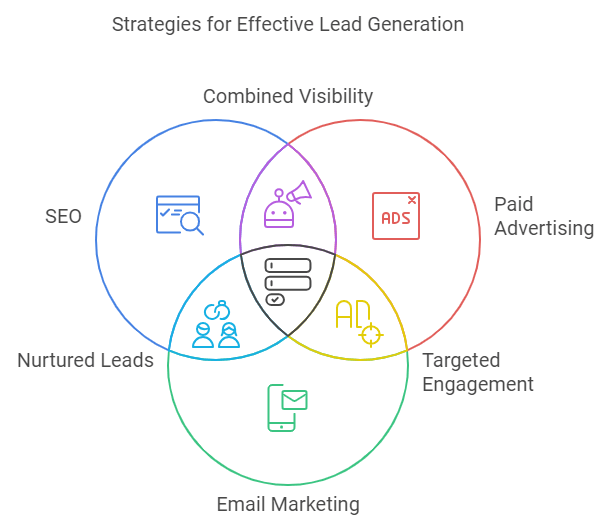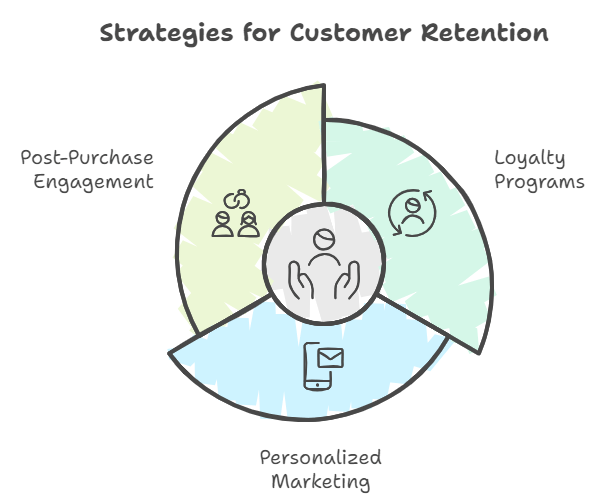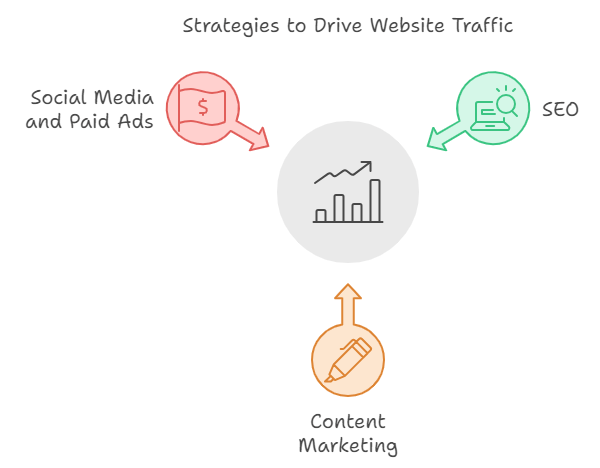Introduction to Marketing Plan Goals
Marketing plan goals are specific, measurable objectives that help guide a business’s marketing efforts toward achieving broader business targets. These goals outline what a company aims to achieve through its marketing activities, such as increasing brand visibility, generating leads, or driving sales. Setting clear marketing goals is crucial because they provide direction, focus resources on what matters most, and serve as a benchmark for measuring the effectiveness of marketing strategies.
It’s important to differentiate between general business goals and marketing-specific objectives. While business goals may include overarching aims like growing revenue or expanding market share, marketing plan goals focus on the actions and outcomes necessary to achieve those business objectives. For example, while a business goal might be to increase sales by 20%, a marketing plan goal could be to boost website traffic or improve conversion rates, both of which contribute to the larger sales target.
Establishing effective marketing plan goals ensures that every marketing activity is purposeful and aligned with the company’s long-term vision, helping the business grow strategically and sustainably.
1. Increase Brand Awareness
One of the most critical marketing plan goals for any business is to increase brand awareness. Building a strong brand presence ensures that more potential customers are familiar with your products or services, making them more likely to engage with your business when they’re ready to buy. In today’s competitive market, businesses that invest in boosting their brand awareness often stand out, attract more customers, and develop long-term brand loyalty.
There are several strategies to increase brand awareness:
- Content Marketing: Producing valuable and relevant content, such as blog posts, videos, infographics, and podcasts, positions your business as an authority in your industry. This not only educates your audience but also creates more opportunities for your brand to be seen and shared.
- Influencer Partnerships: Collaborating with influencers who have a strong following in your target market can expose your brand to a broader audience. Influencers can authentically promote your products or services, boosting credibility and visibility.
- Social Media Campaigns: Social media platforms like Instagram, Facebook, TikTok, and LinkedIn provide powerful tools for reaching new audiences. Paid social media campaigns, contests, and organic posts that engage users can significantly raise your brand’s profile.
By prioritizing brand awareness in your marketing plan, you build the foundation for all other marketing activities. A well-known brand enjoys higher trust and recognition, making it easier to achieve other marketing goals, such as lead generation and sales.
2. Generate High-Quality Leads
Another essential marketing plan goal is to generate high-quality leads—potential customers who are likely to convert into paying clients. Generating leads is crucial because it fills your sales funnel with prospects who have already shown interest in your product or service, improving your chances of closing sales and growing revenue.
However, it’s not just about quantity—quality matters. High-quality leads are those who align with your target audience and are more likely to purchase based on their needs and behaviors. Focusing on quality ensures that your marketing efforts are efficient and your sales team is not wasting time on unqualified prospects.
Some effective lead generation strategies include:
- SEO (Search Engine Optimization): By optimizing your website for relevant keywords, you can attract organic traffic from users who are actively searching for products or services similar to yours. SEO ensures that your website ranks higher on search engines, leading to more visibility and quality leads.
- Paid Advertising: Running targeted ads on platforms like Google Ads, Facebook Ads, and LinkedIn allows you to reach potential customers based on demographics, interests, and behaviors. Paid ads are highly effective for quickly generating leads, especially when tailored to the right audience.
- Email Marketing: Offering valuable content through email newsletters, free guides, or downloadable resources can help you capture leads. By nurturing these leads with personalized email campaigns, you keep them engaged and guide them down the sales funnel.

By focusing on generating high-quality leads, your marketing efforts become more efficient, leading to higher conversion rates and ultimately contributing to the overall success of your business.
3. Enhance Customer Retention
While attracting new customers is important, one of the most valuable marketing plan goals is to enhance customer retention. Retaining customers is often more cost-effective than acquiring new ones, and loyal customers are likely to spend more over time. Focusing on customer retention can significantly improve your business’s long-term profitability and create a loyal customer base that advocates for your brand.
There are several ways to improve customer retention:
- Loyalty Programs: Offering rewards, discounts, or special offers to repeat customers incentivizes them to continue purchasing from your brand. Loyalty programs also make customers feel valued, encouraging long-term relationships.
- Personalized Marketing: Tailoring your marketing messages and promotions based on customer behavior and preferences increases engagement and strengthens the relationship with your audience. For example, personalized emails that offer product recommendations based on past purchases can keep customers coming back.
- Post-Purchase Engagement: Maintaining communication after a customer makes a purchase can make a significant difference. Sending follow-up emails, offering customer support, or inviting feedback can help nurture relationships and increase the chances of repeat business.

By making customer retention a priority in your marketing plan, you ensure steady revenue and foster a loyal community that can provide referrals and word-of-mouth marketing.
4. Drive Website Traffic
An essential marketing plan goal is to drive website traffic. Your website is often the first point of contact between your brand and potential customers, making it a crucial asset in your marketing efforts. The more traffic your site receives, the more opportunities you have to convert visitors into leads and customers. However, it’s not just about quantity—quality traffic from relevant audiences leads to better results.
To drive traffic to your website, consider these strategies:
- SEO (Search Engine Optimization): Optimize your website’s content and structure to rank higher in search engine results. Targeting keywords relevant to your industry, ensuring fast page loading times, and providing valuable content can help you attract organic traffic.
- Content Marketing: Regularly publishing high-quality, informative content such as blog posts, guides, and videos can draw in visitors who are interested in your offerings. Content marketing not only drives traffic but also establishes your brand as a thought leader in your industry.
- Social Media and Paid Ads: Sharing content on social media platforms and using paid ads can bring in targeted traffic quickly. Platforms like Facebook, Instagram, and Google Ads allow you to drive specific audiences to your website with highly targeted campaigns.

By making website traffic a focus of your marketing goals, you can increase visibility, generate more leads, and create more opportunities to convert visitors into customers.
5. Boost Sales and Conversions
The ultimate aim of most marketing efforts is to boost sales and conversions. After all, marketing’s primary role is to drive revenue growth by turning leads into paying customers. Setting goals around increasing conversions ensures that all of your marketing efforts are aligned toward achieving tangible results that directly impact your bottom line.
Here are a few ways to improve sales and conversions:
- Optimized Landing Pages: Creating high-converting landing pages that are tailored to specific campaigns or audiences is essential. These pages should have clear calls-to-action, persuasive copy, and minimal distractions to guide visitors toward making a purchase.
- Sales Funnel Optimization: Review and streamline your customer’s journey from discovery to purchase. Reducing friction at each stage of the funnel—whether it’s improving the checkout process or offering incentives for first-time buyers—can significantly improve your conversion rates.
- Retargeting Campaigns: Using retargeting ads to follow up with people who visited your site but didn’t make a purchase can bring them back to complete their transaction. These ads help maintain visibility and remind potential customers of the value your product or service offers.
Aligning your marketing plan to prioritize sales and conversion optimization ensures that your marketing efforts lead to measurable business growth.
Conclusion
Setting clear and effective marketing plan goals is essential for any business looking to grow and succeed. Whether you’re aiming to increase brand awareness, generate high-quality leads, enhance customer retention, drive website traffic, or boost sales and conversions, having defined goals ensures that your marketing activities are focused and strategic.
A strategic marketing plan should align these goals with your overall business objectives, ensuring long-term success and measurable outcomes. For those just starting out or refining their strategies, using a free marketing plan template can be a great way to begin organizing your marketing goals and tactics.
By incorporating the right marketing plan goals into your strategy, your business will be well-positioned to achieve sustainable growth and improve its overall performance.

Juan is a Digital Advertising / SEM Specialist with over 10 years of experience with Google AdWords, Bing Ad Center, Facebook, LinkedIn, Google Analytics, HTML, and WordPress. He is a co-founder of Sheaf Media Group and has work in several online advertising projects for retail, automotive, and service industries. Additionally, Juan holds a bachelor’s degree in Psychology and has a deep interest in the science of human behavior which he attributes as the key factor for his success in the advertising world.


